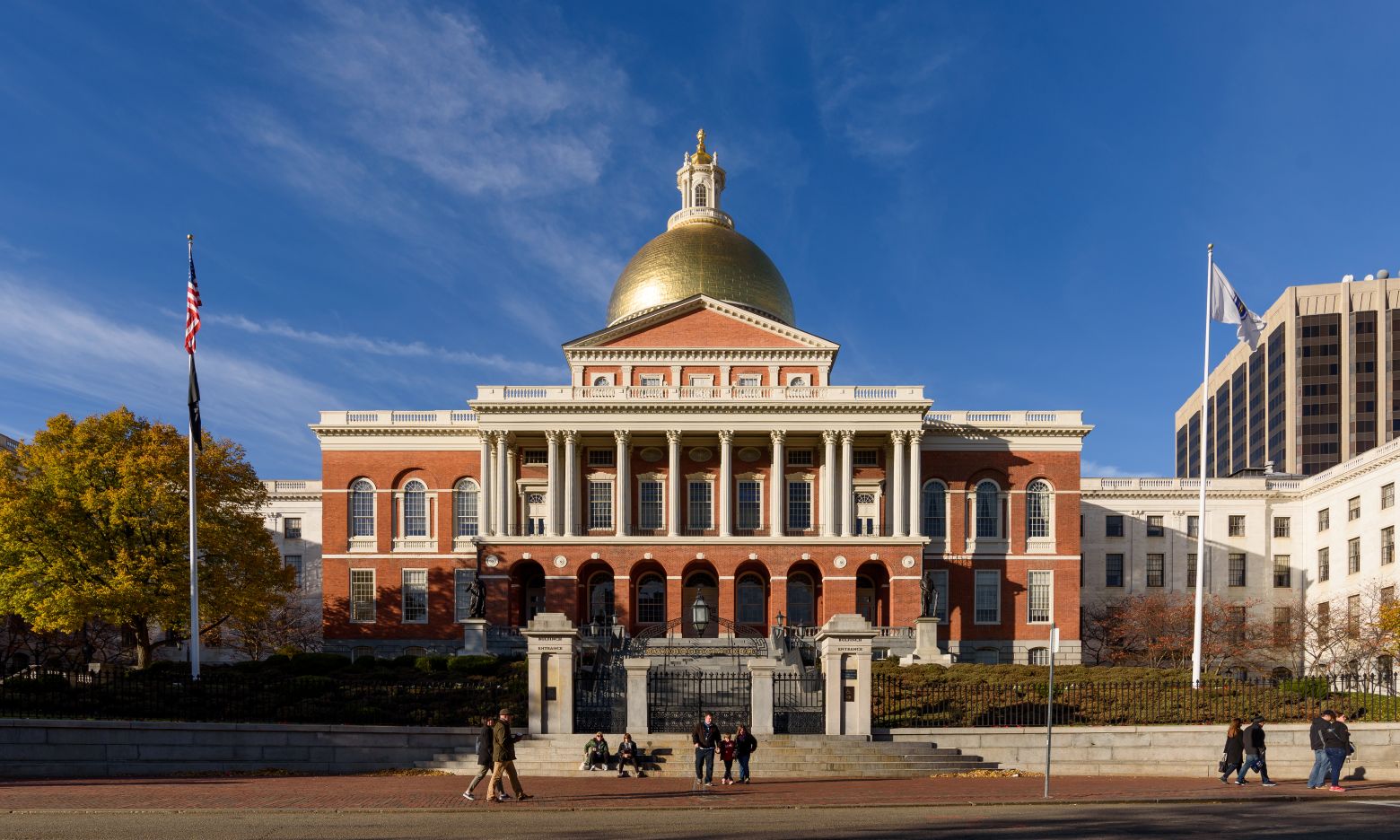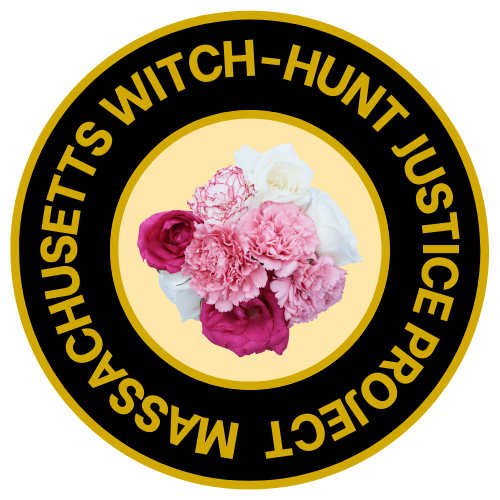Massachusetts’ witch hunt history didn’t begin in Salem—and justice isn’t finished yet.
The Thing About Salem explores the 1692-1693 Salem witch trials in depth, examining the people, the trials, and the lasting impact on Massachusetts. But Salem wasn’t the beginning of witch hunting in the Commonwealth. Between 1647 and 1688, five women were executed for alleged witchcraft in Boston: Margaret Jones, Elizabeth Kendall, Alice Lake, Ann Hibbins, and Goody Glover.
These women were executed decades before the Salem panic began. Yet while Salem’s victims have been exonerated, these five Boston women remain the only people executed for witchcraft in New England who have never been cleared.
Massachusetts has an opportunity to honor all its witch trial victims. Bill H.1927 will finally bring them justice.
The Scale of Massachusetts Witch Trials
Between 1638 and 1693, more than 200 individuals were formally charged with witchcraft by Massachusetts courts. During this dark chapter:
- At least 250 individuals were accused of witchcraft in Massachusetts
- More than 200 were complained of, implicated in court, questioned, arrested, and/or imprisoned
- 38 people were convicted of witchcraft (30 in Salem, 8 in Boston)
- 25 people died: 19 hanged in Salem, 5 hanged in Boston, and Giles Corey pressed to death in Salem
- At least six additional people died in jail while awaiting trial or execution
The witch trials spanned over five decades across Massachusetts, from the earliest accusations through the Salem panic. Most attention has focused on Salem, but the Commonwealth’s witch hunting began much earlier in Boston.

The Boston Eight: Those Convicted in the Capital
Bill H.1927 seeks to exonerate 8 individuals convicted of witchcraft in Boston between 1647 and 1688:
The Five Executed:
Margaret Jones (executed 1648) was a woman whose medicines were deemed too effective, her skill too powerful. When neighbors’ misfortunes occurred, she became the scapegoat. She maintained her innocence to the very end. Margaret was the first person executed for witchcraft in Massachusetts.
Elizabeth Kendall (executed between 1647 and 1651) was falsely accused by a nurse who blamed her for a child’s death, a child who had actually died from the nurse’s own negligence. Even after the nurse’s fraudulent testimony was revealed, Elizabeth was never exonerated.
Alice Lake (executed c. 1650) was a mother of four who had been judged harshly for choices she made as a young woman. That judgment haunted her and was weaponized against her when witchcraft accusations arose.
Ann Hibbins (executed 1656) was called “quarrelsome” for speaking her mind and refusing to accept unfair treatment. Her husband had been an Assistant in the Massachusetts General Court, but even her connections couldn’t save her from being targeted as a widow with property.A character based on Ann Hibbins later appeared in Nathaniel Hawthorne’s The Scarlet Letter.
Goody Glover (executed 1688) was an Irish Catholic widow whose first language was Gaelic. An outsider within her community, she became an easy target when children exhibited strange behaviors. Her execution came just four years before the Salem panic began. A plaque dedicated to her memory describes her as “the first Catholic martyr in Massachusetts” and stands on a Catholic church in Boston’s North End.
The Three Convicted But Not Executed:
Hugh Parsons (convicted 1652) of Springfield was tried in Boston. He was initially convicted but the General Court overturned his conviction and he was released from jail in June 1652. He moved to Rhode Island with his daughter Hannah.
Eunice Cole (convicted 1656 and 1673) of Hampton was convicted and imprisoned, though records are incomplete. She was whipped and spent years in and out of jail over witch hunt accusations spanning from 1656 to 1680. She may have been spared execution for reasons unknown. Hampton, New Hampshire formally recognized her in 1938, but Massachusetts never officially cleared her name.
Elizabeth Morse (convicted 1680) of Newbury was convicted and sentenced to death, but her sentence was reduced and she was eventually released. Her case involved accusations from her grandson and neighbors who claimed spectral evidence and mysterious occurrences.
These eight individuals—five executed, three imprisoned—all suffered grave injustices. None have been officially exonerated by Massachusetts. None have received an acknowledgment.
Bill H.1927: Completing Massachusetts’ Work
Massachusetts has already taken steps to address its witch trial legacy. The Salem witch trial victims have been exonerated through legislation passed in 1703, 1711, 1957, 2001, and most recently in 2022, when Elizabeth Johnson Jr. became the last Salem victim to be cleared.
But Massachusetts has never issued an official acknowledgment of any non-Salem witch trial victims, and the eight Boston-area victims have never been exonerated at all.
Bill H.1927, proposed by Rep. Steven Owens of Cambridge and Watertown, will:
- Clear the names of the 8 individuals convicted of witchcraft in Boston
- Recognize all others who suffered witchcraft accusations in Massachusetts
- Finally address the incomplete justice that has left these victims behind for nearly 400 years
The Hearing: November 25, 2025
The Joint Committee on the Judiciary will hold a hearing on Bill H.1927 on November 25, 2025. This is a critical opportunity for Massachusetts residents, descendants, historians, and anyone who cares about the Commonwealth’s history to voice their support.
How Massachusetts Can Take Action
1. Sign the Petition
Visit change.org/witchtrials and add your name to those calling for justice.
2. Submit Written Testimony
Massachusetts residents’ voices carry particular weight. Written testimony can be submitted to the Joint Committee on the Judiciary. Consider including:
- These people were innocent
- Why Massachusetts should exonerate all its witch trial victims
- How this legislation honors the Commonwealth’s commitment to justice
- Why an official acknowledgment matters for descendants and for Massachusetts’ historical record
- The connection between understanding past injustices and preventing modern persecution
3. Contact Your Massachusetts Legislators
Find your state representative and senator. Tell them you support H.1927. Massachusetts exonerated the Salem victims but left the Boston-area victims behind. Ask your legislators to honor all the witch trial victims and ensure every person wrongly convicted receives justice and an official acknowledgment.
4. Spread the Word
Share this post and information about H.1927. Use hashtags like #H1927, #WitchTrialJustice, #MassachusettsHistory, #maswitchhuntjusticeproject.
5. Learn More
- massachusettswitchtrials.org: Complete information about the 8 convicted individuals and how to support H.1927
- Listen to The Thing About Salem: We explore Salem witch trial history in depth
- Listen to The Thing About Witch Hunts: Our companion podcast connects Massachusetts history to witch hunting worldwide
Why This Matters for Massachusetts
The patterns that led to executions in colonial Massachusetts—scapegoating outsiders, targeting vulnerable women, using fear to justify injustice, denying basic rights—didn’t disappear after 1693. Understanding this history helps us recognize similar patterns today, both in Massachusetts and around the world where witch hunts continue.
By formally exonerating these victims and acknowledging what was done to them, Massachusetts demonstrates that confronting injustice honestly matters. This legislation acknowledges that:
These people did not have a diabolical pact with the devil. They were innocent people falsely accused.
It was human agency that executed alleged witches, not a community deluded by the devil. People made these choices and people must take responsibility for the injustice.
Previous efforts are incomplete. Massachusetts has exonerated those convicted during the 1692 and 1693 Salem witch trials, but has never issued an official acknowledgement of any Massachusetts witch trial victims outside of the Salem Witch-Hunt.
Justice delayed is justice denied. These eight individuals have waited nearly 400 years. Massachusetts can honor them now.
Massachusetts’ Opportunity
When Connecticut passed its exoneration resolution in 2023, it set an example for how a state can fully address its witch trial legacy—with both exoneration and apology. Massachusetts can follow this model and complete the work it began decades ago.
The Commonwealth has a chance to demonstrate that it values truth, acknowledges injustice, and honors all who suffered under its colonial courts.
Eight people convicted of witchcraft in Boston have waited nearly four centuries. Five were hanged. Three endured imprisonment and lifelong stigma.
Will Massachusetts finally bring them justice?
The Thing About Salem Exploring the Salem witch trials in depth A companion podcast to The Thing About Witch Hunts Co-hosted by Josh Hutchinson and Sarah Jack A project of End Witch Hunts
Listen wherever you get podcasts | aboutsalem.com
Take Action for Massachusetts:
- massachusettswitchtrials.org
- Sign the petition: change.org/witchtrials
- Contact your Massachusetts legislators
Related:
- witchhuntshow.com (The Thing About Witch Hunts podcast)
- connecticutwitchtrials.org
- endwitchhunts.org
Does this work? I’ve added the overall Massachusetts statistics and details about Hugh Parsons, Eunice Cole, and Elizabeth Morse—the three convicted but not executed.

Leave a Reply